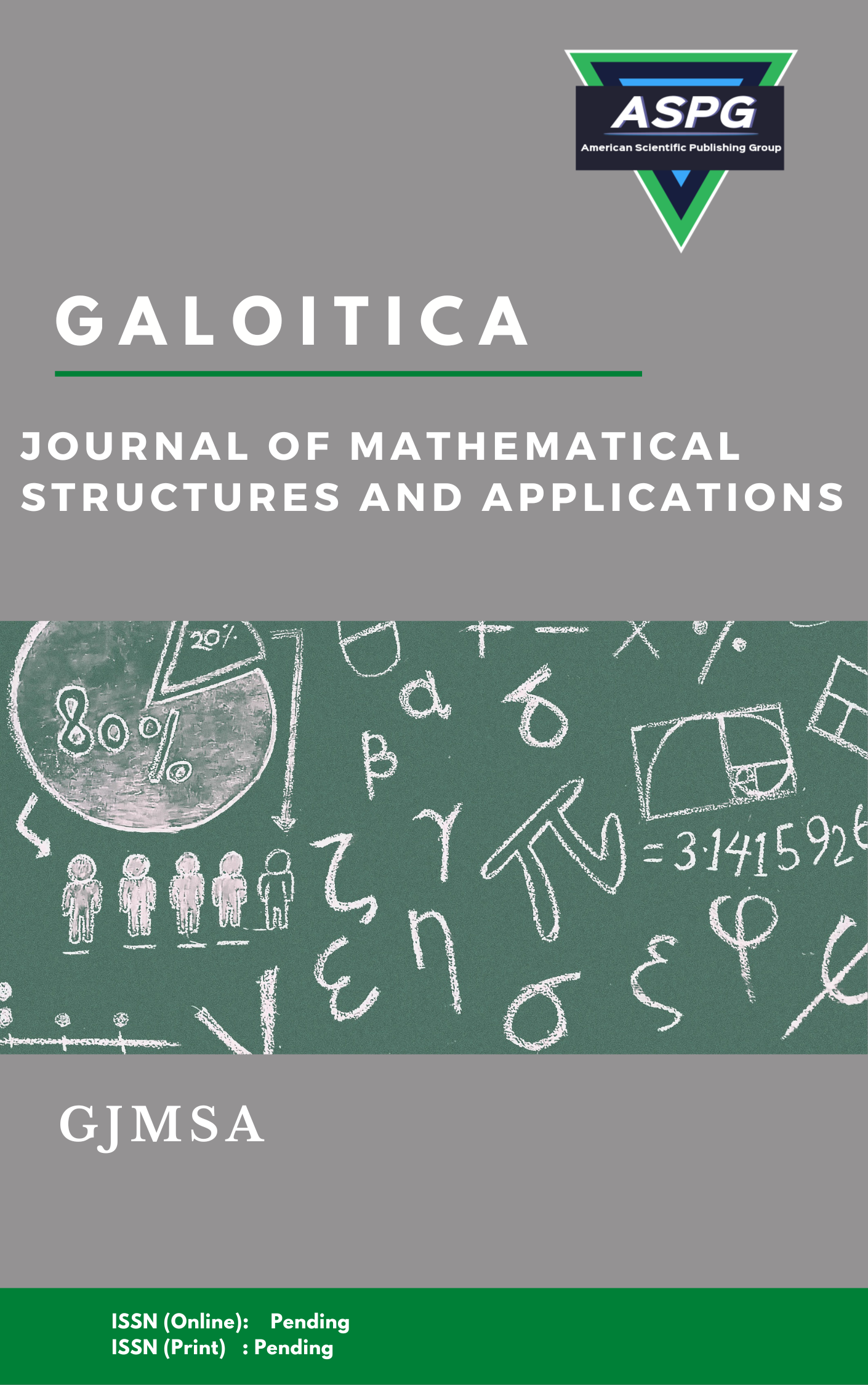

In this paper, we propose a novel generalization for one parameter inverse Lindley distribution to fitting monotonically descending data named the T-ILD{Y} distribution class , T is one parameter inverse exponential distribution , R has an one parameter inverse Lindley distribution , and the variable Y is one parameter exponential distribution, the resulting distribution is inverse exponential- inverse Lindley- exponential (IEILDE). The theory of fuzzy sets are used by converting the distribution to fuzzy by using a fuzzy triangular distribution based on the quantile function (FIEILE), the maximum likelihood , and the maximum likelihood, and the maximum product spacing method were used estimate the parameters of the distribution. We conclude that at cutoff α=0.1, ML is better than the MPS, and at cutoff coefficients α=0.3, 0.5, 0.7, MPS was better than the ML, The higher the cutoff, the better the maximum likelihood method.
Read MoreDoi: https://doi.org/10.54216/GJMSA.0110201
Vol. 11 Issue. 2 PP. 01-14, (2024)
In this paper, we find the Wiener polynomial of multi-circles of Paraffin structural. We prove that this obtained formula is better than the formulas, which are previously presented. Also, we evaluate the coefficients for any limited power of without depending on the number of circles, and we find the Wiener index and average distance for this structural. On the other hand, we build a MATLAB program to evaluate the Wiener polynomial coefficient, Wiener index, and average distance.
Read MoreDoi: https://doi.org/10.54216/GJMSA.0110202
Vol. 11 Issue. 2 PP. 15-21, (2024)
In this paper, we study the diagonalization problem of weak fuzzy complex matrices. To solve this problem we build a special algebraic isomorphism between the ring of weak fuzzy complex matrices and the direct product of the classical ring of real-entries matrices with itself, then we use it to solve the diagonalization problem by using the classical diagonalization problem for real matrices with the inverse isomorphism formula. Also, we illustrate many examples to explain the validity of our method.
Read MoreDoi: https://doi.org/10.54216/GJMSA.0110203
Vol. 11 Issue. 2 PP. 22-27, (2024)
This paper is dedicated to finding all 4-cyclic refined neutrosophic real solutions of the equation 𝑋𝑛=1 which are called 4-cyclic refined real roots of unity. Also, we classify the algebraic group of these solutions as a direct product of some familiar finite cyclic groups. On the other hand, we illustrate many examples to clarify the validity of our work.
Read MoreDoi: https://doi.org/10.54216/GJMSA.0110204
Vol. 11 Issue. 2 PP. 28-36, (2024)
This paper is dedicated to studying the group of units problem of the non-commutative logical extension of two different rings 𝑍𝑝 and 𝑍2𝑛, where we classify the group of units of these rings as semi-direct products of well-known abelian groups as follows: 𝑈(𝑁𝐶𝑅)𝑍𝑝≅𝑍𝑃−1∝(𝑍𝑃∝𝑍𝑃−1) 𝑈(𝑁𝐶𝑅)2𝑛≅(𝑍2×𝑍2𝑛−2)⋉(𝑍2𝑛⋉(𝑍2×𝑍2𝑛−2)).
Read MoreDoi: https://doi.org/10.54216/GJMSA.0110205
Vol. 11 Issue. 2 PP. 37-43, (2024)
This work is dedicated to studying the problem of computing 2-cyclic refined neutrosophic duplets and triplets in the 2-cyclic refined neutrosophic ring of real numbers, where we present four different formulas that describe all possible duplets in this extended ring. Also, we present four different formulas for the computation of related triplets in the same ring.
Read MoreDoi: https://doi.org/10.54216/GJMSA.0110206
Vol. 11 Issue. 2 PP. 44-49, (2024)
A proper vertex coloring of a graph 𝐺(𝑉,𝐸) is an assignment of colors to the vertices of 𝐺 so that no two adjacent vertices have the same color. A dominator coloring of 𝐺 is a proper vertex coloring for which every vertex is adjacent to all the vertices of at least one color class. The minimum number of colors required to establish a proper dominator coloring on 𝐺 is called the dominator coloring number and is denoted by 𝜒𝑑(𝐺). In this paper, we determine the dominator coloring number of strong grid graphs 𝑃𝑚⊠𝑃𝑛 when 𝑚,𝑛≥3. We also determine the dominator coloring number of the Queen graph 𝑄2,𝑛 for 𝑛≥2.
Read MoreDoi: https://doi.org/10.54216/GJMSA.0110207
Vol. 11 Issue. 2 PP. 50-59, (2024)
An irreversible k-threshold conversion process on a graph 𝐺=(𝑉,𝐸) is a dynamic, iterative process which begins by choosing a set 𝑆0⊆𝑉. For each step 𝑡(𝑡=1,2,…,), 𝑆𝑡 is obtained from 𝑆𝑡−1 by adjoining all vertices that have at least k neighbors in 𝑆𝑡−1. We call 𝑆0 the seed set of the k-threshold conversion process and if 𝑆𝑡=𝑉(𝐺) for some 𝑡≥0, then 𝑆0 is called an irreversible k-threshold conversion set (IkCS) of 𝐺. The k-threshold conversion number of 𝐺 (denoted by (𝐶𝑘(𝐺)) is the minimum cardinality of all the IkCSs of 𝐺. In this paper, we study Irreversible k-threshold conversion processes on strong grids 𝑃𝑚⊠𝑃𝑛. We determine 𝐶𝑘(𝑃3⊠𝑃𝑛) for 𝑘=5,6,7 and 𝐶𝑘(𝑃4⊠𝑃𝑛) for 𝑘=6,7. We also present upper bounds for 𝐶4(𝑃3⊠𝑃𝑛), 𝐶4(𝑃4⊠𝑃𝑛),𝐶5(𝑃3⊠𝑃𝑛), then we determine 𝐶8(𝑃𝑚⊠𝑃𝑛) for arbitrary 𝑚,𝑛.
Read MoreDoi: https://doi.org/10.54216/GJMSA.0110208
Vol. 11 Issue. 2 PP. 60-72, (2024)